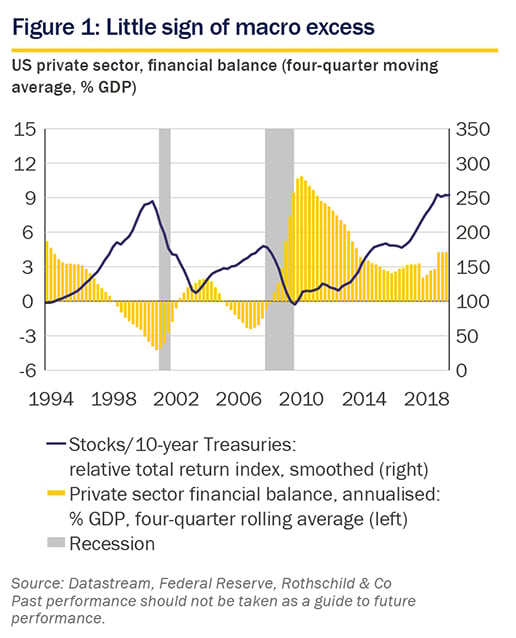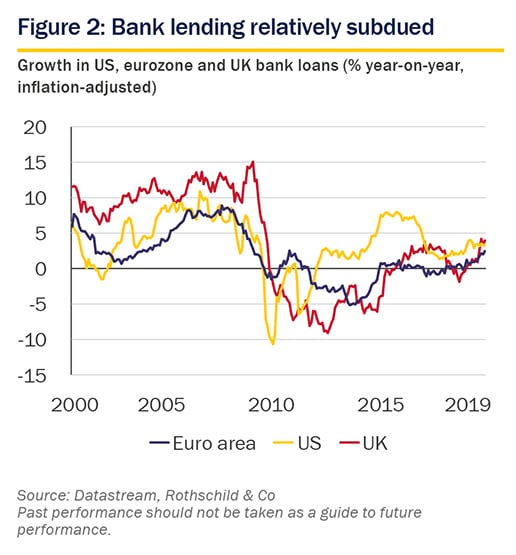Wealth Management: Market Perspective – Keeping an open mind

Kevin Gardiner, Global Investment Strategist, Wealth Management
Still no sell-by date on this cycle
There have been further signs that the slowdown in the global economy, which is now two years old, may be starting to bottom out.
The highly cyclical manufacturing sector seems to be stabilising on both sides of the Atlantic and in China. The most likely cause of a renewed downward impetus - escalation of the US-China trade spat - seems a bit less likely.
We can hardly relax just yet: the presidential Twitter account is still active. As impeachment progresses (if only towards eventual collapse in the Senate) a defensive but electioneering President may be even less predictable.
But at least a “phase 1” agreement seems close - and we can still see a potentially more positive outcome, which helps balance the risk of a bad one. For all his idiosyncracies, Mr Trump is the only Western politician willing to remind us that China remains the most protected big economy. China knows this - and the fact that liberalisation, not central dictat, has done most to deliver its stunning economic success.
Meanwhile, manufacturing's slide has not (yet) been very contagious. The US has just posted the lowest unemployment rate, and the most building permits, in the cycle to date.
Whether we are close to the low point or not, as we see things, there is no need for a more dramatic punctuation mark in this lengthy business cycle. The two-year-old slowdown may just be the mirror image of the acceleration, fuelled by one-off tax cuts, that preceded it.
Why should a more dramatic denouement loom? We've noted often that this little-loved cycle has been one of the best behaved. In particular, the financial excesses that marked the two previous cycles have been largely absent.
Figure 1 reminds us that 10 years into an economic expansion, the US private sector still has a cashflow surplus. Instead of borrowing, it is supplying liquidity to the wider economy. This is no guarantee that a big recession is not at hand: maybe US consumers just want to save more, period? But it has been a good reason so far for giving this elderly cycle the benefit of the doubt - and for wondering, perhaps, whether a more frothy phase may yet still lie ahead of us.
Click the image to enlarge
Figure 2 shows that it is not just the US where bank lending to the private sector has grown more slowly in this cycle than in the last: lending has been much more subdued in the eurozone and the UK too.
Click the image to enlarge
In some cases - corporate loans, for example - slower bank lending has reflected banks' loss of market share, as lending has shifted to bond markets. But bonds are probably 'safer' for the system - and borrowers - than bank loans. Their coupons are mostly fixed, their maturities longer, and any defaults will hit individual bondholders, not the banking system. And overall, this has never felt like an 'irrationally exuberant' cycle.
Inflation is another excess that has led to a “corrective” recession in the past. But in this cycle, subdued inflation has been one of the factors encouraging central banks to keep the already-slack monetary reins loose - and to look for even more unconventional ways of doing so, as we discuss, with misgivings, below.
(Stop press: the UK election makes a less business-friendly government unlikely. Main beneficiaries are the currency, and domestically facing stocks. Internationally oriented stocks, and gilts, face offsetting risks - higher taxes versus a lower currency for the overseas earners; higher issuance and inflation versus safe-haven status for gilts).
Click here to continue: Market Perspective: Modern monetary theory
In this Market Perspective:
- Foreword
- Keeping an open mind (current page)
- Modern monetary theory
- US elections and portfolios
- Economy and markets: background
- Important information
Download the full Market Perspective in PDF format (PDF 3.86 MB)

